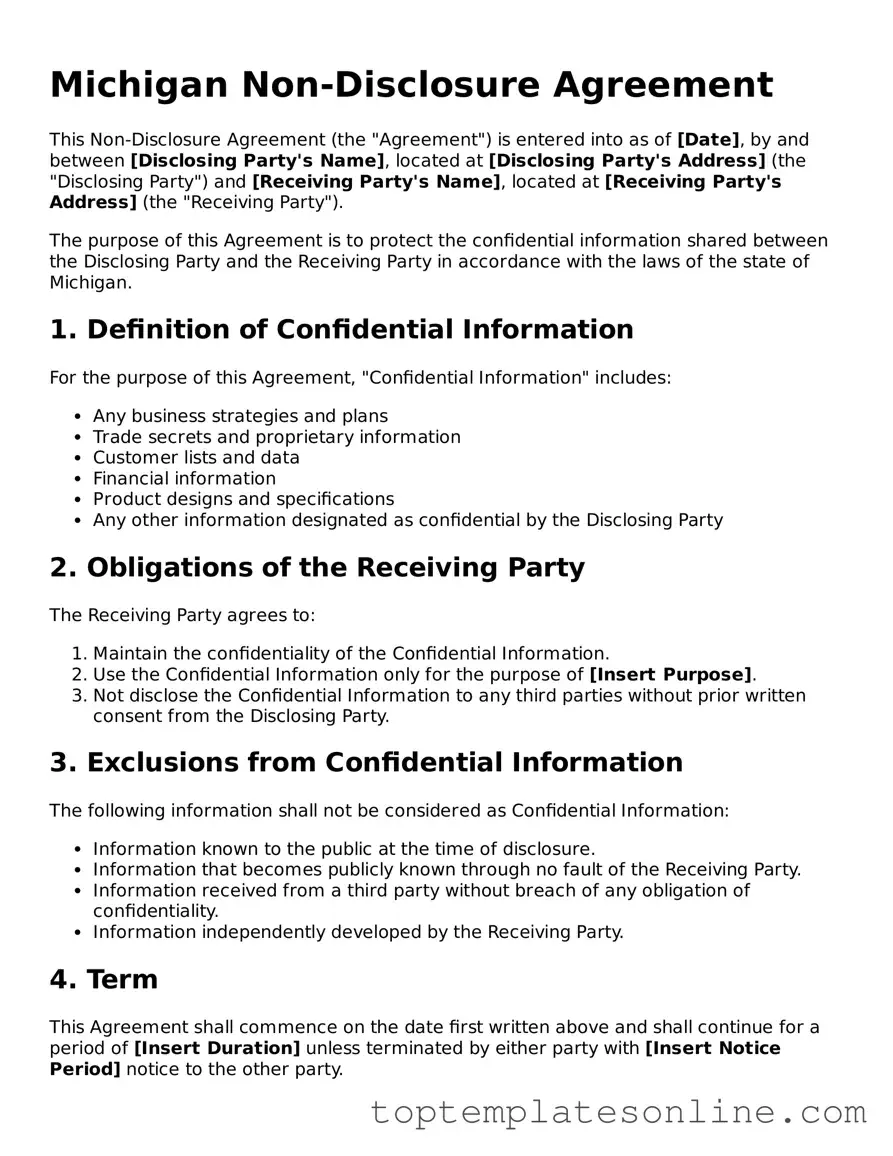When engaging in business relationships, protecting sensitive information is crucial, and this is where the Michigan Non-disclosure Agreement (NDA) form comes into play. This legal document serves as a safeguard, ensuring that parties involved maintain confidentiality regarding proprietary information, trade secrets, and other sensitive data. By outlining the obligations of each party, the NDA specifies what information is considered confidential and sets clear guidelines on how that information should be handled. It also details the duration of the confidentiality obligation, which can vary based on the nature of the information and the relationship between the parties. Furthermore, the agreement may include provisions for the return or destruction of confidential materials once the relationship ends or the purpose of sharing the information has been fulfilled. By using a well-structured NDA, businesses in Michigan can foster trust and collaboration while minimizing the risk of information leaks that could jeopardize their competitive edge.
